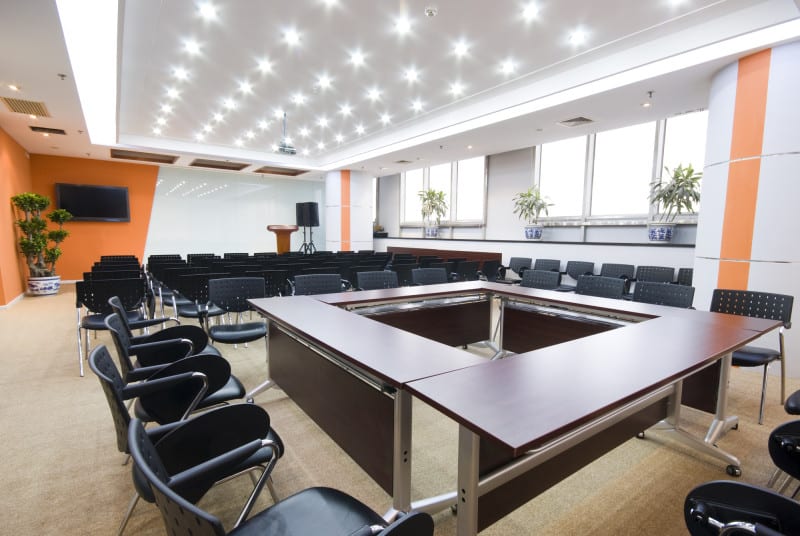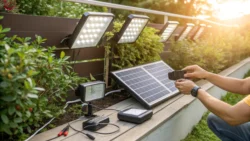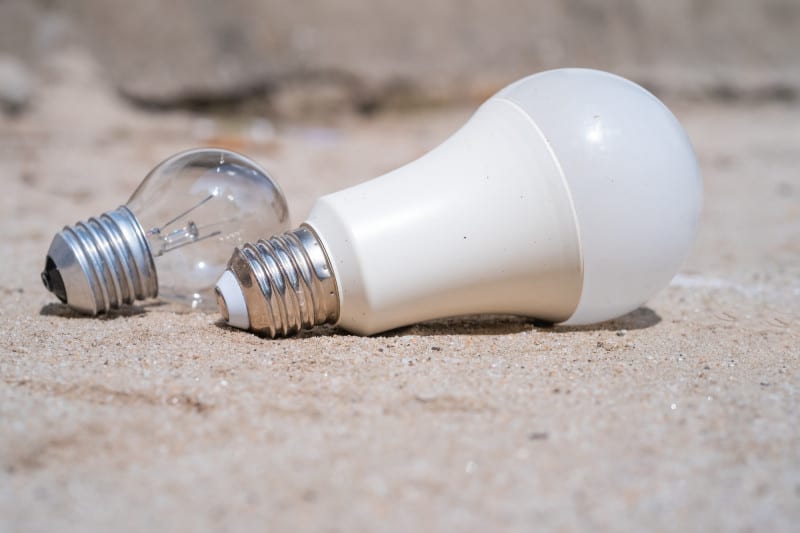In today’s competitive commercial building landscape, energy efficiency and cost savings are key factors in maintaining a successful and sustainable business.
One of the most significant contributors to a building’s energy consumption is lighting.
Creating an optimized and energy-efficient lighting strategy can seem like a daunting task, but with careful consideration and thoughtful planning, it is possible to achieve the perfect balance between energy efficiency, cost savings, and adequate illumination.
In this article, we will explore the various aspects of evaluating your lighting needs, choosing the right fixtures, utilizing natural light sources, incorporating automated lighting solutions, and monitoring your lighting system’s performance to maximize your energy savings and minimize your environmental footprint.
Evaluating Your Lighting Needs
Lighting a commercial building can be like a puzzle, with many pieces that need to fit together perfectly.
Assessing energy needs and exploring costs are the key components of finding the right solution for any building.
It is important to understand what type of lighting is best suited for specific areas, as well as how much light is needed in each space.
Taking into account the size, shape, layout, and purpose of the building is essential in order to create the perfect balance of energy efficiency and cost effectiveness.
It is also necessary to consider different types of lighting systems available. LED lights are gaining popularity due to their energy efficiency, long life span, and lower maintenance costs.
However, other options such as fluorescent or halogen bulbs may also be suitable depending on the application or desired result.
When selecting lighting fixtures it is important to consider the number of lamps per fixture and their wattage ratings so that you can maximize energy savings while meeting your lighting needs.
When it comes to maximizing your savings on commercial building lighting optimization, there are no easy answers or one-size-fits-all solutions.
By taking time to evaluate your energy needs and explore your options for cost effective solutions you can find the perfect balance between efficiency and cost savings while ensuring you have adequate illumination throughout your space.
Choosing The Right Lighting Fixtures
When it comes to commercial building lighting optimization, choosing the right fixtures is a key factor in energy conservation. There are several things to consider when selecting the right lighting fixtures:
- The type of space you’re lighting – is it an office space, a warehouse, or something else?
- The size and layout of the space – this will determine how much light is needed and where the fixtures should be placed.
- Energy efficiency – make sure your fixtures meet all applicable energy standards for maximum energy savings.
The lighting layout of your commercial building is also important for optimizing energy conservation.
Make sure you place lights in areas that need them most and get rid of any unneeded lights that may be adding to your electricity bill unnecessarily.
Consider installing dimmers or motion sensors to give you more control over the amount of light being used at any given time, as this can help reduce energy waste too.
You can also take advantage of natural light by positioning lamps directly opposite windows or glass doors so they reflect natural sunlight into darker areas while still providing enough illumination.
Utilizing Natural Light Sources
Did you know that up to 40% of all electricity used for lighting comes from commercial buildings?
By maximizing the sun and reducing glare, we can make great strides in our energy efficiency goals.
Here’s a table to illustrate what this could look like:
| Sunlight | Reduced Glare | Energy Savings |
|---|---|---|
| Increased productivity & morale | Improved visibility & comfort levels | Lower costs & environmental footprint |
| Better quality of light for occupants | Lower eye strain & fatigue for occupants | More sustainable long-term solutions |
| Improved aesthetic appeal & ambiance | Reduced air conditioning load on sunny days | Positive contribution to social impact objectives |
Natural light sources offer so many advantages. Sunlight is free, abundant, and helps create a healthier and more productive environment with fewer distractions.
It also improves air quality by allowing more natural ventilation, which reduces the need for mechanical HVAC systems.
It can increase occupant satisfaction as people naturally gravitate towards well-lit spaces with plenty of natural daylight.
Incorporating Automated Lighting Solutions
Incorporating automated lighting solutions into a commercial building is an important step to take when looking to save energy and reduce costs.
Automated lighting systems allow you to control the lights in your building remotely, meaning that you can switch them off when they are not needed.
This helps to ensure that energy is not wasted on lights that are no longer being used.
Automated lights often come with sensors that detect the presence of people in a room and turn the lights on or off accordingly, further helping to save energy.
When looking for automated lighting solutions for your commercial building, here are some tips to keep in mind:
- Look for products with motion sensors and timers: Motion sensors help ensure that lights are only turned on when someone is actually present in the room, while timers can be used to set certain times during which the lights should be switched off.
- Research cost savings: Automated lighting systems may cost more upfront than traditional lighting solutions, but they can lead to significant long-term cost savings due to their energy efficiency.
- Consider user-friendliness: Make sure that the system you choose is easy for employees and others who use your building to understand and use – this will make it easier for everyone involved to take advantage of its features.
- Ensure compatibility: Before purchasing any automated lighting solution, make sure it is compatible with your existing wiring setup so that installation goes smoothly.
By selecting the right automated lighting solution for your commercial building, you can benefit from improved energy efficiency as well as long-term cost savings.
Investing in such a system now can pay dividends in the future!
Monitoring Your Lighting System’s Performance
Now that you have automated lighting solutions in place, the next step is to monitor your lighting system’s performance. Doing so can help you save energy and money, while also increasing customer comfort.
According to the U.S. Department of Energy, efficient commercial lighting can reduce energy costs by up to 40%. That means a return on investment just 1-2 years after making an upgrade – a powerful incentive for any business owner!
The key to successful monitoring is knowing what metrics to look at. This includes things like motion detection, light level sensors, occupancy sensors, and even daylight harvesting systems.
By using these technologies, you can ensure that your lights are only on when they need to be and that they’re not wasting energy when they don’t need to be.
If you integrate your lighting system with other building systems such as HVAC or security, you can create even more cost savings opportunities for yourself and your customers.
In short, monitoring your lighting system’s performance is essential for achieving the maximum energy efficiency and cost savings from your automated lighting solutions.
With the right data in hand, you can make sure that every penny of your investment is paying off – both now and in the future!
Conclusion
Optimizing commercial building lighting is an essential component of a successful and sustainable business.
By taking the time to evaluate your lighting needs, select the most suitable fixtures, harness natural light, and incorporate automated solutions, you can significantly reduce your energy consumption and associated costs.
Monitoring your lighting system’s performance further ensures that your investment pays off, both now and in the future.
Ultimately, the right lighting strategy not only benefits your business financially but also creates a more comfortable and productive environment for occupants, contributing to their well-being and satisfaction.
As energy efficiency and sustainability become increasingly important in the commercial building sector, taking steps to optimize your lighting strategy is a smart and responsible choice that can lead to long-term success.




